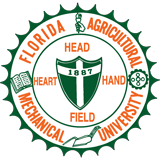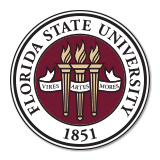A collaboration with adviser leads to success for former FAMU-FSU Engineering student
“Imagine a giant moving toward a tall building,” FAMU-FSU Engineering professor Sungmoon Jung said. “He takes his large hand and pushes the tall building, then lets it go. What happens? The building vibrates. The vibration is one of the responses we study regarding wind effects on high-rise buildings.”
Jung is an associate professor in civil engineering at the FAMU-FSU College of Engineering who studies wind and impact-induced structural vibrations with his research team that includes graduate student Gholamreza “Reza” Amirinia. The collaboration began two years ago when Amirinia was pursuing a doctoral degree at the college. The two hope the study will eventually lead to better design code and standards for new buildings. The project, funded in part by the National Science Foundation, earned recognition by the American Society of Civil Engineers (ASCE).
 ASCE awarded the researchers the 2019 Alfred Noble Prize Award for their research paper titled, “Along-Wind Response of High-Rise Building Subjected to Hurricane Boundary Layer Winds” in the Journal of Structural Engineering, as a technical paper of exceptional merit accepted by the ASCE Committee on Publications.
ASCE awarded the researchers the 2019 Alfred Noble Prize Award for their research paper titled, “Along-Wind Response of High-Rise Building Subjected to Hurricane Boundary Layer Winds” in the Journal of Structural Engineering, as a technical paper of exceptional merit accepted by the ASCE Committee on Publications.
“We are thrilled that Dr. Amirinia and Dr. Jung were recognized with this prestigious award,” Lisa Spainhour, Ph.D. said. “This is a national award given for a technical paper of exceptional merit; no more than one is given out each year and some years no award is given because there aren’t any papers that meet that very high standard.” Spainhour is the professor and interim chair of the department of civil and environmental engineering at the college.
Jung spoke about his former student and the award as a student success story. To be eligible for the Alfred Noble award, the paper must have no more than two co-authors, and one must be 35 or younger.
“I told my students about Amirinia and they were very inspired,” Jung explained. “They knew this research was driven by the student and led to a prestigious award for his hard work. They look at this and realize this might be something they can do too.”
We caught up with the graduate who now works as a structural design engineer at Hayward Baker, Inc. in Chicago and asked him to talk about his research, the award and his time at the FAMU-FSU College of Engineering.
Tell us about yourself and your experience at the college with Dr. Jung as your adviser. I joined the FAMU-FSU Engineering Department of Civil and Environmental Engineering in 2014. During the almost four years of my doctoral study, I was lucky to work under the supervision of Dr. Jung. During each step of my research, he gave me motivation, general direction and the freedom to manage the research details. I was sure that if I got stuck in some spot, we could sit for hours and think about the solutions—something that is a blessing for any student. I believe this success is mainly because of his attitude in directing his me and the rest of his research group.
What’s your advice to students? This is a student success story based on the foundation of student-adviser interactions. I believe these two items plus hard work resulted in success. Students should know their interests first, and then choose their adviser based on their criteria. After that, it is professional interactions between student and adviser that create a relationship based on trust and maybe even friendship.
How do you hope this research might be used to help in the future building of high-rises? The main target of this research was to use newly observed hurricane parameters to improve existing standards. This paper compared some ASCE 7-10 standard requirements with results based on recently observed hurricanes. The final objective is to accurately address the design requirements of high-rise buildings in hurricane-prone regions. Of course, more research in this regard is still needed to address other aspects.
How does it feel to get recognized by the ASCE Noble Prize committee for your research paper? For everyone conducting research, the best award is knowing that the research is being seen, recognized and applied. Dr. Jung, and I put a lot of effort into this paper trying to make it useful for the technical community. Of course, being recognized by the ASCE committee makes us feel happy and showed that hard work always pays back.

